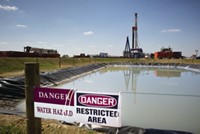Advertisement
Grab your lab coat. Let's get started
Welcome!
Welcome!
Create an account below to get 6 C&EN articles per month, receive newsletters and more - all free.
It seems this is your first time logging in online. Please enter the following information to continue.
As an ACS member you automatically get access to this site. All we need is few more details to create your reading experience.
Not you? Sign in with a different account.
Not you? Sign in with a different account.
ERROR 1
ERROR 1
ERROR 2
ERROR 2
ERROR 2
ERROR 2
ERROR 2
Password and Confirm password must match.
If you have an ACS member number, please enter it here so we can link this account to your membership. (optional)
ERROR 2
ACS values your privacy. By submitting your information, you are gaining access to C&EN and subscribing to our weekly newsletter. We use the information you provide to make your reading experience better, and we will never sell your data to third party members.
Environment
Study Quantifies Tap-Water Chemicals
Assessment of treated U.S. drinking water reveals that chemical oxidation processes remove most contaminants
by Rachel A. Petkewich
January 5, 2009
| A version of this story appeared in
Volume 87, Issue 1
Chemical oxidation processes used at drinking-water treatment plants, either ozonation or chlorination, argely control the occurrence of pharmaceutical and endocrine-disrupting compounds in the plant's finished water, according to the first peer-reviewed study of these compounds in treated U.S. tap water (Environ. Sci. Technol., DOI: 10.1021/es801845a). Previous studies have detected compounds such as naproxen and atrazine in treated wastewater, rivers, and reservoirs, but few data are available for these chemicals in treated U.S. drinking water. Researchers at the Southern Nevada Water Authority analyzed source water, finished drinking water, and distributed tap water from 19 utilities serving 28 million people for 51 potentially troublesome compounds during 2006 and 2007. They found significantly fewer of the compounds in tap water than in source or finished water. Team leader Shane A. Snyder says additional wastewater treatment would likely be the most prudent way to further reduce the compounds in tap water.




Join the conversation
Contact the reporter
Submit a Letter to the Editor for publication
Engage with us on Twitter